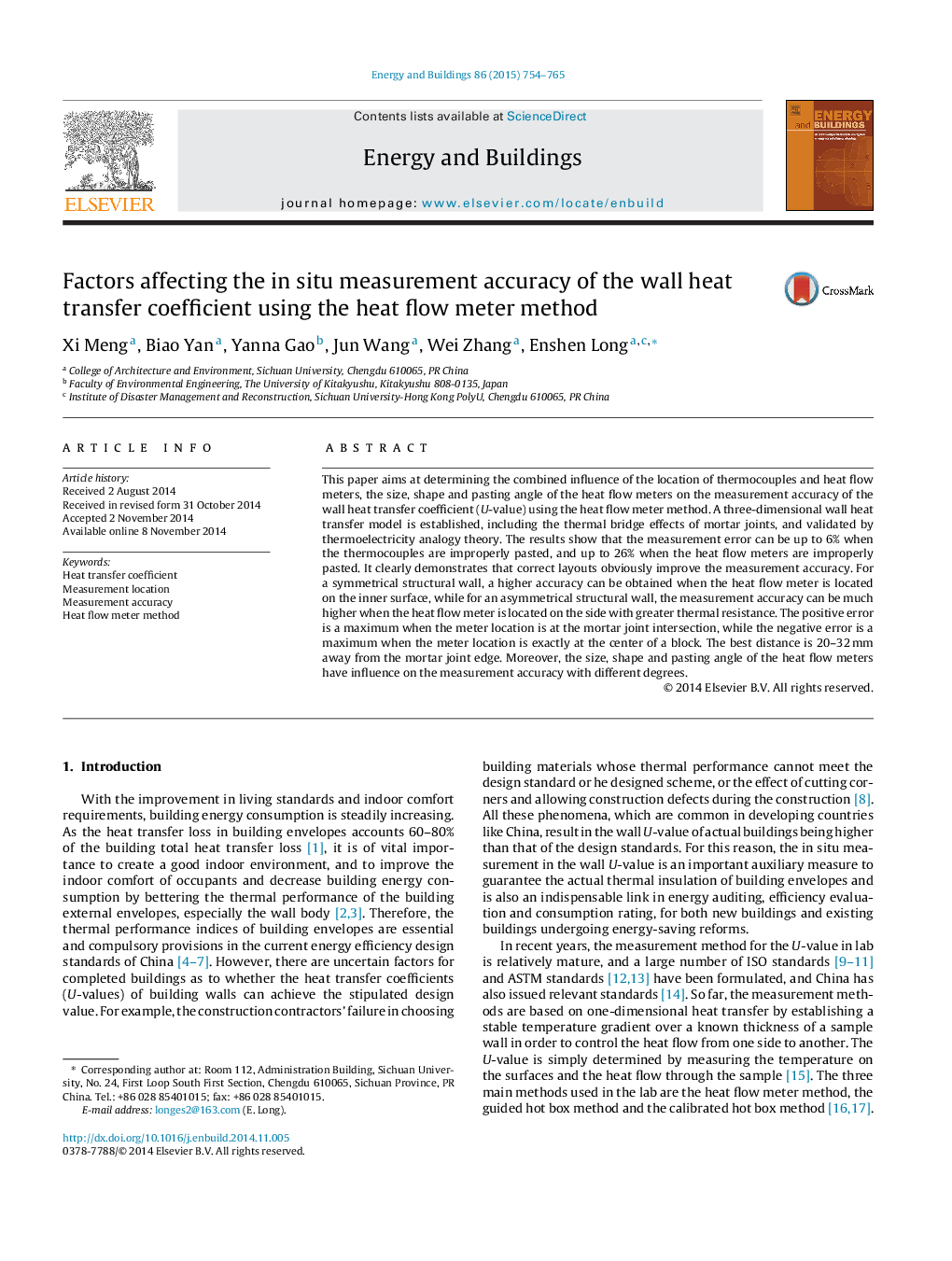| Article ID | Journal | Published Year | Pages | File Type |
|---|---|---|---|---|
| 6733029 | Energy and Buildings | 2015 | 12 Pages |
Abstract
This paper aims at determining the combined influence of the location of thermocouples and heat flow meters, the size, shape and pasting angle of the heat flow meters on the measurement accuracy of the wall heat transfer coefficient (U-value) using the heat flow meter method. A three-dimensional wall heat transfer model is established, including the thermal bridge effects of mortar joints, and validated by thermoelectricity analogy theory. The results show that the measurement error can be up to 6% when the thermocouples are improperly pasted, and up to 26% when the heat flow meters are improperly pasted. It clearly demonstrates that correct layouts obviously improve the measurement accuracy. For a symmetrical structural wall, a higher accuracy can be obtained when the heat flow meter is located on the inner surface, while for an asymmetrical structural wall, the measurement accuracy can be much higher when the heat flow meter is located on the side with greater thermal resistance. The positive error is a maximum when the meter location is at the mortar joint intersection, while the negative error is a maximum when the meter location is exactly at the center of a block. The best distance is 20-32Â mm away from the mortar joint edge. Moreover, the size, shape and pasting angle of the heat flow meters have influence on the measurement accuracy with different degrees.
Related Topics
Physical Sciences and Engineering
Energy
Renewable Energy, Sustainability and the Environment
Authors
Xi Meng, Biao Yan, Yanna Gao, Jun Wang, Wei Zhang, Enshen Long,
